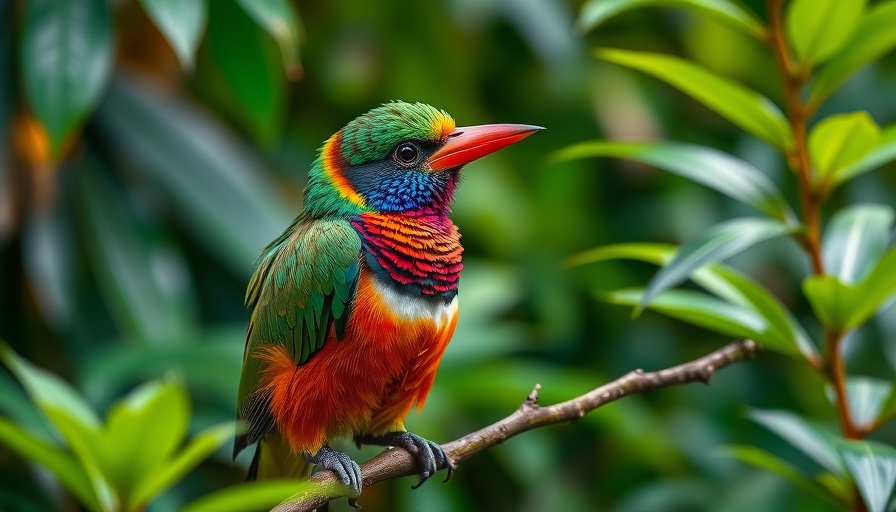
Witnessing Nature: A Unique Encounter with Sloths in Costa Rica
In a heartwarming moment captured in Costa Rica, our encounter with wild sloths reminds us of the beauty and intricacies of nature. These adorable animals may not be the fastest or flashiest of creatures, but their slow and deliberate movements unveil a hidden world worth appreciating. Just watching a mother sloth and her baby for 30 minutes has shown us the beautiful bond they share, as the baby clings to its mother to learn the essentials of survival.
In 'Glimpse in the Wild Mama and Baby Sloth in Costa Rica', the discussion dives into the unique life of sloths, exploring key insights that sparked deeper analysis on our end.
The Life of a Baby Sloth: Learning With Mom
Sloth mothers are incredibly nurturing, teaching their young how to climb, forage, and navigate their leafy homes high in the trees. For the first six months, baby sloths remain closely attached to their mothers, relying on them for food and guidance. They take their time absorbing the lessons needed for the wild, mirroring the pacing at which they move throughout their lives. Once weaned, these young sloths tend to linger in the same region, typically solitary except during mating season—highlighting their solitary lifestyle that is central to their existence.
The Risks of Life on the Ground
Despite their charming nature, sloths face dangers when they descend from their protective canopy to the forest floor. It’s during these vulnerable moments—primarily when they descend to relieve themselves—that they become easy targets for predators such as jaguars and dogs. Sloths poop just about once weekly, and this act demands the utmost caution due to the risks involved. Movement for a sloth is slow and awkward, which makes ground time particularly risky, yet essential for their survival.
Understanding Sloths: Evolutionary Mastery of Survival
Sloths have adapted to suit their treetop habitat with impressive claws that anchor them securely among the branches. Their slow metabolic rates correspond with their leisurely lifestyles, complementing their diet consisting mainly of leaves. The evolutionary choice of a languorous existence reduces the need for high energy demands, ultimately reflecting their unique niche in the ecosystem. Understanding these distinctive adaptations not only provides insight into their world but reveals the broader ecological balance that sustains Costa Rica’s lush forests.
Conservation: Why We Should Support Sloth Protection
The presence of sloths in Costa Rica emphasizes the health of the ecosystem. Sadly, ongoing deforestation poses a pronounced threat to their habitats. As we marvel at these beautiful creatures, it is crucial to remember their plight; sloths could very easily be on the brink of losing their homes. Supporting conservation efforts and responsible tourism initiatives can help protect their habitats. By doing so, we can ensure that future generations will also have the chance to experience the wonder of watching these magnificent animals in their natural environment.
A Journey Worth Taking: Exploring Costa Rica’s Wonders
For those considering a venture into the wonders of Costa Rica, witnessing wildlife encounters like that of the sloths can be incredibly rewarding. Having a connection with nature adds a deeper dimension to travel, especially when it includes such endearing moments as watching baby sloths in their natural habitat. This experience grows exponentially when allowed to unfold organically, without the barriers typically presented in zoological settings.
While visiting, bear in mind that respecting these animals and their environments is paramount. Approaching wildlife encounters with a patient heart—allowing nature to reveal its stories at its own pace—ensures a more genuine experience. The next time you find yourself strolling through the stunning landscapes of Costa Rica, listen carefully. You might just hear the gentle rustle of leaves as the sloths hang out, living their slow yet enthralling lives.
 Add Row
Add Row  Add
Add 




 Add Row
Add Row  Add
Add 

Write A Comment